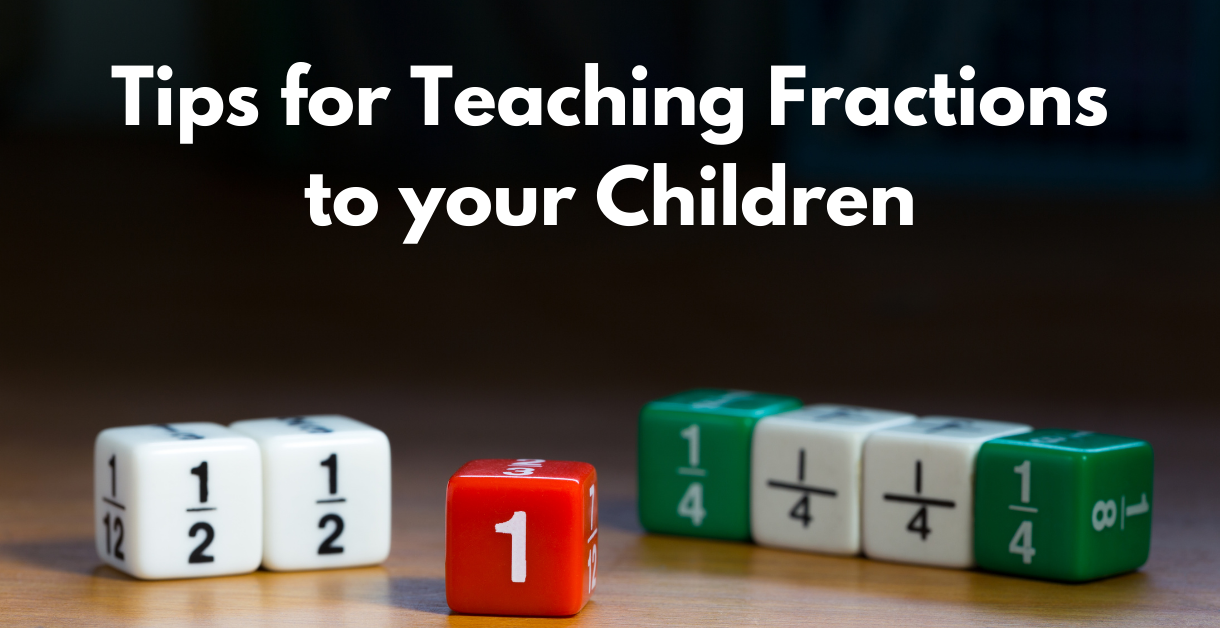Fractions are an essential part of the math curriculum for elementary and middle school children. It also provides the foundation for high school algebra and beyond. So it is imperative that children really understand this concept.
Children begin by learning the concept of a whole and how to partition the whole into equal parts. A whole can be one object, like a pizza, or a group of objects, like a bunch of bananas. Later, children learn how to compare fractions, add, subtract, multiply, and divide them.
The first thing to know to help your child with fractions is to really understand the concept yourself. It is not just about knowing key vocabulary, like numerator, denominator, unit fraction, and improper fraction, or being able to follow a few steps to get an answer, you really need to have a conceptual understanding to help your child. Fortunately, there are numerous websites out there to refresh your memory and help you understand what your children should be learning. Take the time to look at some of those sites.
Here are other helpful tips when teaching your children fractions.
• Use concrete objects Fractions can be an abstract concept for children, so use concrete objects to help them visualize fractions. Use a lot of different representations, like food, which can include pieces of uncooked spaghetti, cereal, dried beans, as well as toys, household items, or objects in nature. You can also create your own fraction pieces from construction paper to help them visualize parts of wholes, equivalent fractions, and can use them to compare or even add and subtract fractions.• Focus on fractions in everyday life Point out when you are using fractions in everyday life, for example, pouring a half of a glass of juice. Take opportunities to let your child explain fractions, for example, why something is a half, or why it is not a half.
• Create representations Create fraction strips from construction paper with your child. To do this, cut a strip that represents one whole. Then create other strips of the same size and divide them into different equal parts. Write the fractions on the strips. This helps children connect the concrete and symbolic representations. You can put the strips together like a puzzle or use them to play a game. Be creative and most of all have fun!
• Play games Use different games to make learning fractions enjoyable and interesting. Even older children can have fun with fraction games. For example, you can use dominoes to compare and order fractions by letting one side of each domino represent the numerator and the other side represent the denominator.
• Promptly address misconceptions Always address any misconceptions about fractions. For example, your child might think that a smaller denominator means a smaller fraction; for example, they may think that ½ is less than ¼ because 2 is less than 4. Use concrete materials to show them that the more parts into which the whole is divided, the smaller the parts and therefore the smaller the fraction.
Remember that learning anything new takes time. Be patient and help your children have a pleasant experience learning this important concept.
![]() Special thanks to Athlene from Buzzmath for this week's post.
Special thanks to Athlene from Buzzmath for this week's post.
Athlene Whyte is a subject matter expert in mathematics. She is a former educator and school administrator who now writes and edits math content for school publishers.
Buzzmath is a digital interactive program developed by Scolab to build conceptual understanding, procedural fluency, and real-world application in mathematics for grades 1 through 8.
At the Co-op. get exclusive savings HERE on Buzzmath, an educational platform that offers engaging math activities aligned with your curriculum. Plus until 1/15/2022, get 300 SmartPoints as a Deal of the week at the Homeschool Buyers Co-op.


